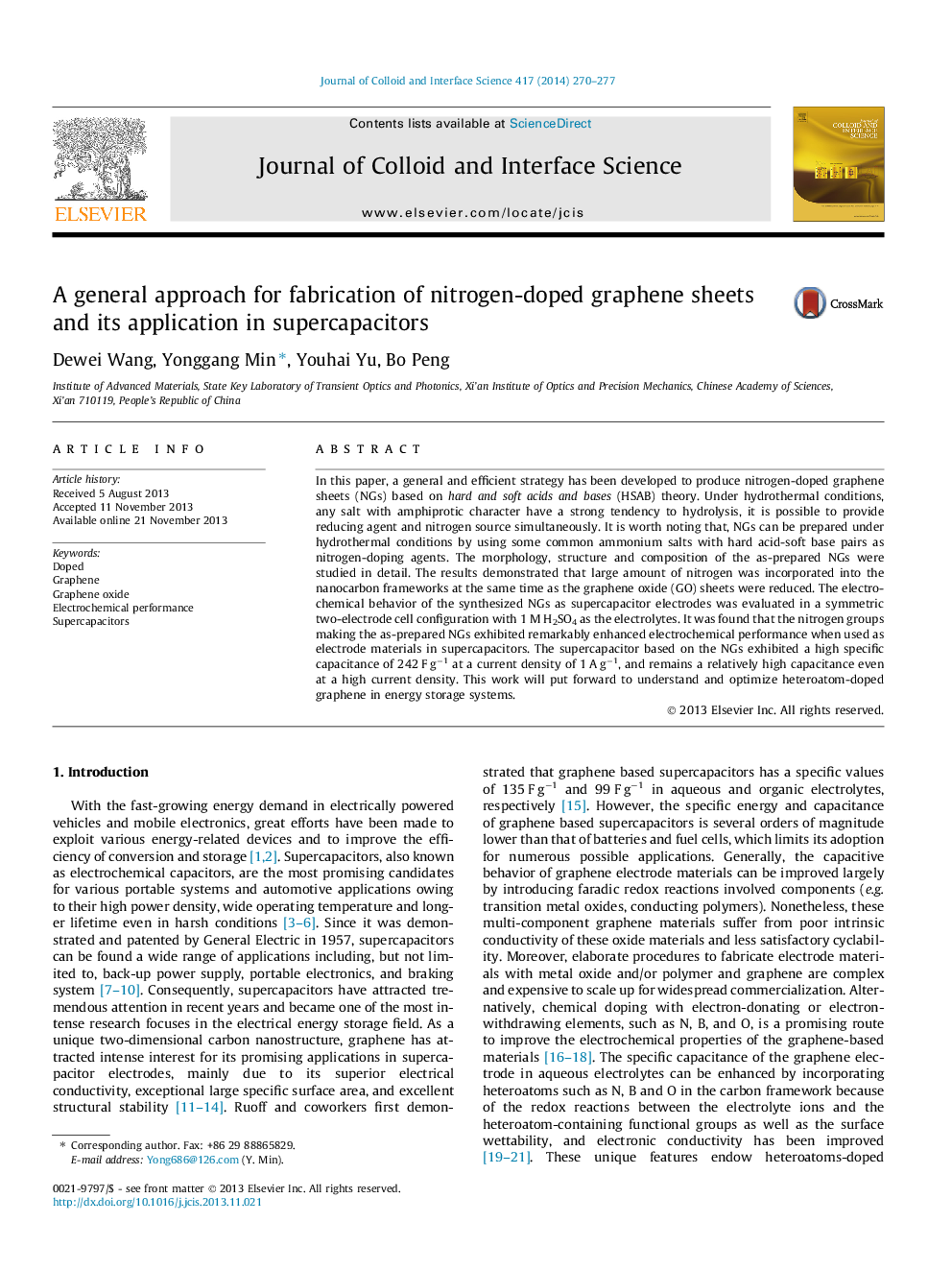| Article ID | Journal | Published Year | Pages | File Type |
|---|---|---|---|---|
| 607554 | Journal of Colloid and Interface Science | 2014 | 8 Pages |
•A general approach for fabrication of nitrogen-doped graphene sheets has been developed.•Large amount of nitrogen was incorporated into the nanocarbon frameworks.•Nitrogen-doped graphene sheets can be used as electrodes for supercapacitors.•The as-prepared nitrogen-doped graphene exhibits excellent capacitive performance.
In this paper, a general and efficient strategy has been developed to produce nitrogen-doped graphene sheets (NGs) based on hard and soft acids and bases (HSAB) theory. Under hydrothermal conditions, any salt with amphiprotic character have a strong tendency to hydrolysis, it is possible to provide reducing agent and nitrogen source simultaneously. It is worth noting that, NGs can be prepared under hydrothermal conditions by using some common ammonium salts with hard acid-soft base pairs as nitrogen-doping agents. The morphology, structure and composition of the as-prepared NGs were studied in detail. The results demonstrated that large amount of nitrogen was incorporated into the nanocarbon frameworks at the same time as the graphene oxide (GO) sheets were reduced. The electrochemical behavior of the synthesized NGs as supercapacitor electrodes was evaluated in a symmetric two-electrode cell configuration with 1 M H2SO4 as the electrolytes. It was found that the nitrogen groups making the as-prepared NGs exhibited remarkably enhanced electrochemical performance when used as electrode materials in supercapacitors. The supercapacitor based on the NGs exhibited a high specific capacitance of 242 F g−1 at a current density of 1 A g−1, and remains a relatively high capacitance even at a high current density. This work will put forward to understand and optimize heteroatom-doped graphene in energy storage systems.
Graphical abstractFigure optionsDownload full-size imageDownload high-quality image (72 K)Download as PowerPoint slide
